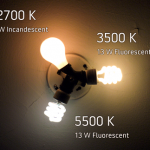 One of the reasons our clients choose MGS is our depth of experience. With more than 30 years in the business, we’re experts on gold. Naturally, this invites lots of questions from jewelers, pawnbrokers, and other professionals who want to learn more about the world’s most popular metal – and we’re more than happy to oblige! We also love to take questions on our Facebook page. One question we’ve gotten a few times is “what is ‘alluvial’ gold?”
One of the reasons our clients choose MGS is our depth of experience. With more than 30 years in the business, we’re experts on gold. Naturally, this invites lots of questions from jewelers, pawnbrokers, and other professionals who want to learn more about the world’s most popular metal – and we’re more than happy to oblige! We also love to take questions on our Facebook page. One question we’ve gotten a few times is “what is ‘alluvial’ gold?”
The short answer: alluvial gold refers to tiny gold flakes or dust that came to be through water erosion. This is what prospectors are looking for when panning a river.
The longer answer: in geology, alluvium is loose sediment which has been eroded from a primary source, transported and further eroded by water, and redeposited in a non-marine (i.e. “non-ocean”) place. Alluvium builds up in areas where the water’s flow isn’t strong enough to continue transporting the sediment any further. For a deposit of alluvium to form, the sediment particles need to be dense enough to resist the water’s flow. Since gold is extremely dense, it is easily trapped alongside other dense alluvial particles in these low-flow areas. The bits of gold found in these deposits of alluvium are called “alluvial gold.”
Since alluvial gold is usually found in extremely small amounts, we have a blanket policy to not accept it at the refinery. The last time we dealt with alluvial gold, there wasn’t enough for our refiners to work with. Plus, it wouldn’t even register on the scale – so an accurate payout wasn’t possible.











